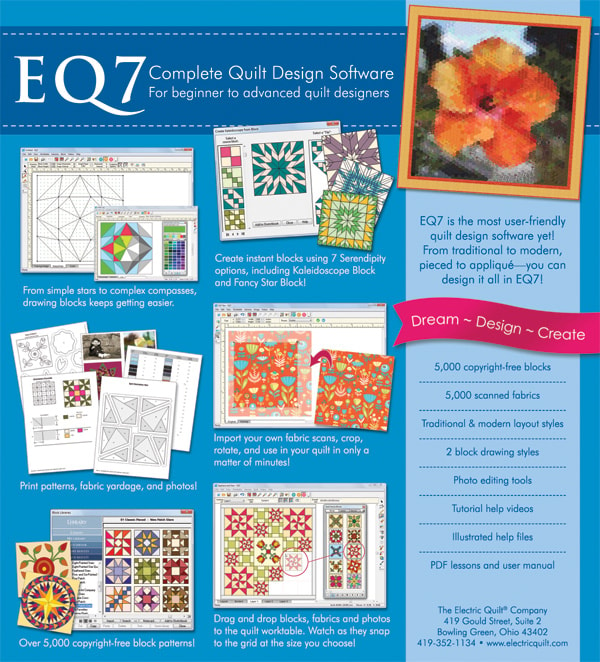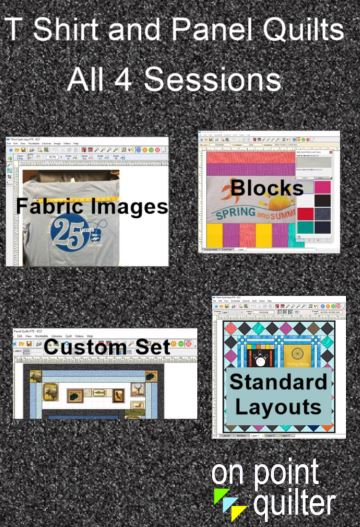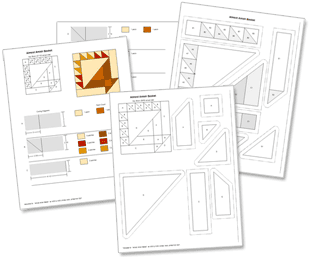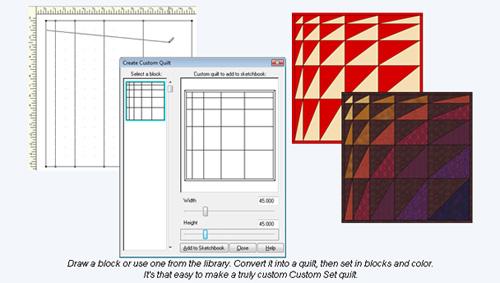
There are other ways to stitch this block together–I used fabric basting glue, but some actually stitch it without pins or glue–give it a try and see what works best for you. The final and best solution was a partial seam approach.Īnd to be fair, my way is not the ONLY way. The challenging part of this block was not piecing it, but finding the perfect combination of connecting the two shapes to get a perfect 7 inch finished block. While the points at the apex of the curve are always matched, I tried easing the concave and convex curves into each other a couple of different ways. One of the nicest things about this block is that while there are curves on the inside, it is stitched into a square block and can be set on point or horizontally. It consists of two shapes, a center and a half melon. This is the AccuQuilt BOB Die set for this block. This turned out to be the perfect opportunity to make gifts for upcoming events and holidays. The block I chose is Rob Peter to Pay Paul. With curves it seems there are fewer seams, simpler blocks, and endless design opportunities. Curved blocks are always a challenge, and also one of my favorites. I love seeing what everyone has done with these quilt blocks–And today is my day.
#Electric quilt version 7 pdf#
Click on either page below to download the pdf version. I drew the block in EQ7 and printed the rotary cutting instructions and added the die cutters needed in red to the instructions. The large triangle on the outside would be a great place to use an allover novelty print. These layouts turn the blocks so that the monkey wrenches interlock.

Here are a couple of additional layouts besides the one that is shown on the AccuQuilt blog.
#Electric quilt version 7 free#
The AccuQuilt GO! quilt pattern is a free download. There are cutting instructions using alternate dies shown below. If you love the pattern as much as I do, you may want to go ahead and make a block or two. While they use a new BOB die and the new GO! Big die cutter, some of us already have dies for the AccuQuilt GO! that will make this quilt with just a little more effort until we save our pennies for the newest tool. Yesterday’s blog on AccuQuilt features the Snail’s Trail block.

Here are some layout options as well as the dies needed to cut it with the new BOB die or with the alternate individual dies. Not the best photo, but it is one where the quilted flowers were used.The Snail’s Trail is one of my favorite quilt blocks. Here is a sample of a square that is part of a current project.īelow is a sample of a square that is part of a completed quilt. Now that the flower is done, something needs to be added to the rest of the block. Notice that I enlarged the petal shape on the outside petals. This takes you into the step that comples the flower. This is what it will look like when you are done. Closer is good, but try not to go over the original line. Just start retracing your outline about one eighth inch next to the original. Once you are at the center, you have to come back out. Just continue stitching around with curving lines going into the center. The next step builds the inside flower shapes. A nice thing about this practice is that you can make mistakes. I started at one end and stitched a flower shape motif in the center of the space. The first time, I practiced on a pot-holder size fabric readied for quilting (fabric, batting, and backing pinned together. It also helps to practice drawing the motifs on paper until the movements are very familiar. They're to give an idea of what the motif looks like.


In reality, when done free-motion on the machine, they are a lot neater. Please note that the motifs shown below were drawn free-hand so they are not precise. I wanted to make a simpler version of them on my home machine. This machine has the stitch regulator, which works wonderful giving nice even stitches.Ī while ago, I came across an article in The Quilt Life magazine that had a demo by Judy Woolworth for making free-motion flowers (shown below.) I fell in love. Since I don't, I make do with my Bernina 440. I think if I had the s pace and money for a long-arm. For me it's the best part of the whole quilt process.


 0 kommentar(er)
0 kommentar(er)
